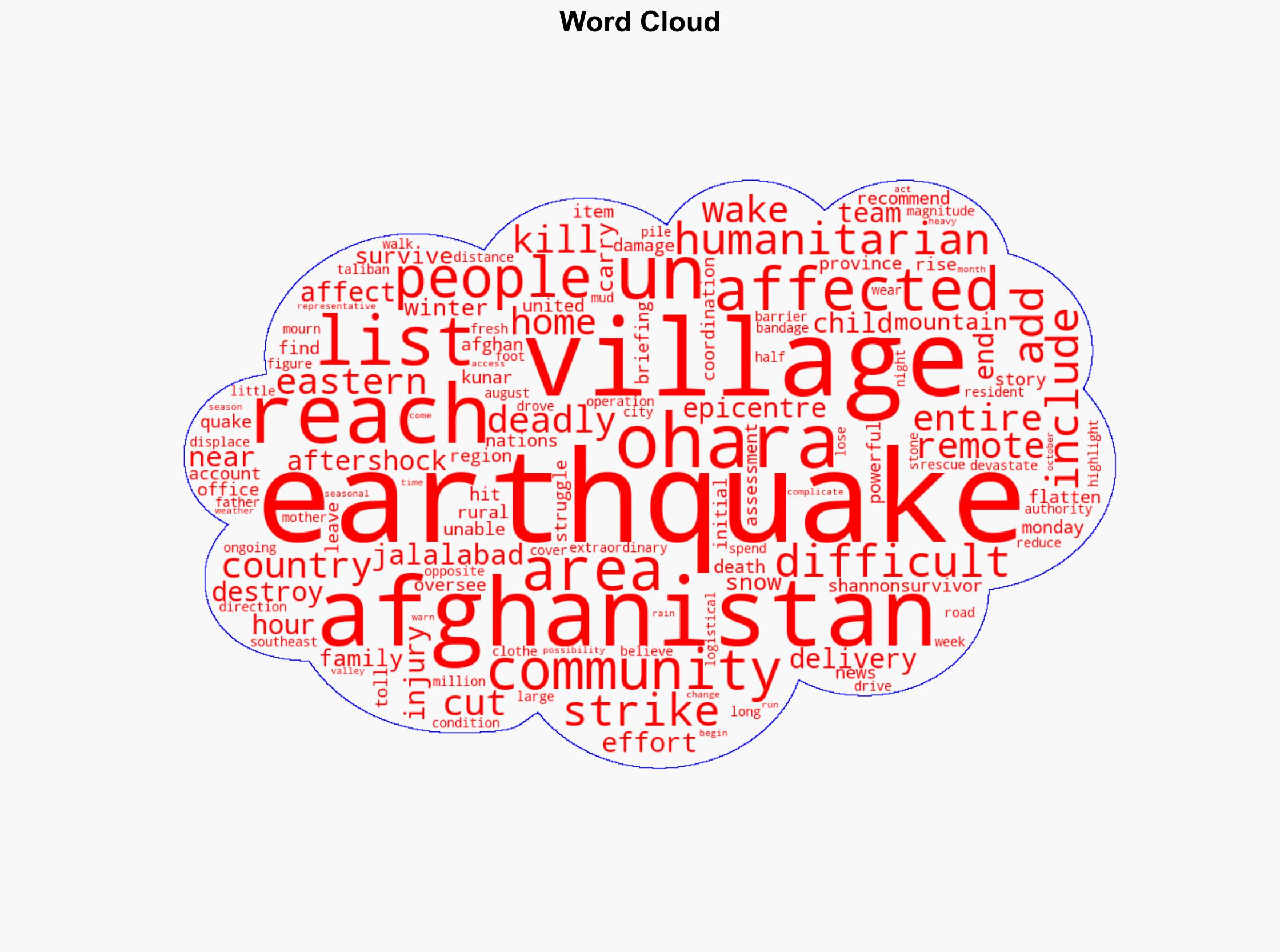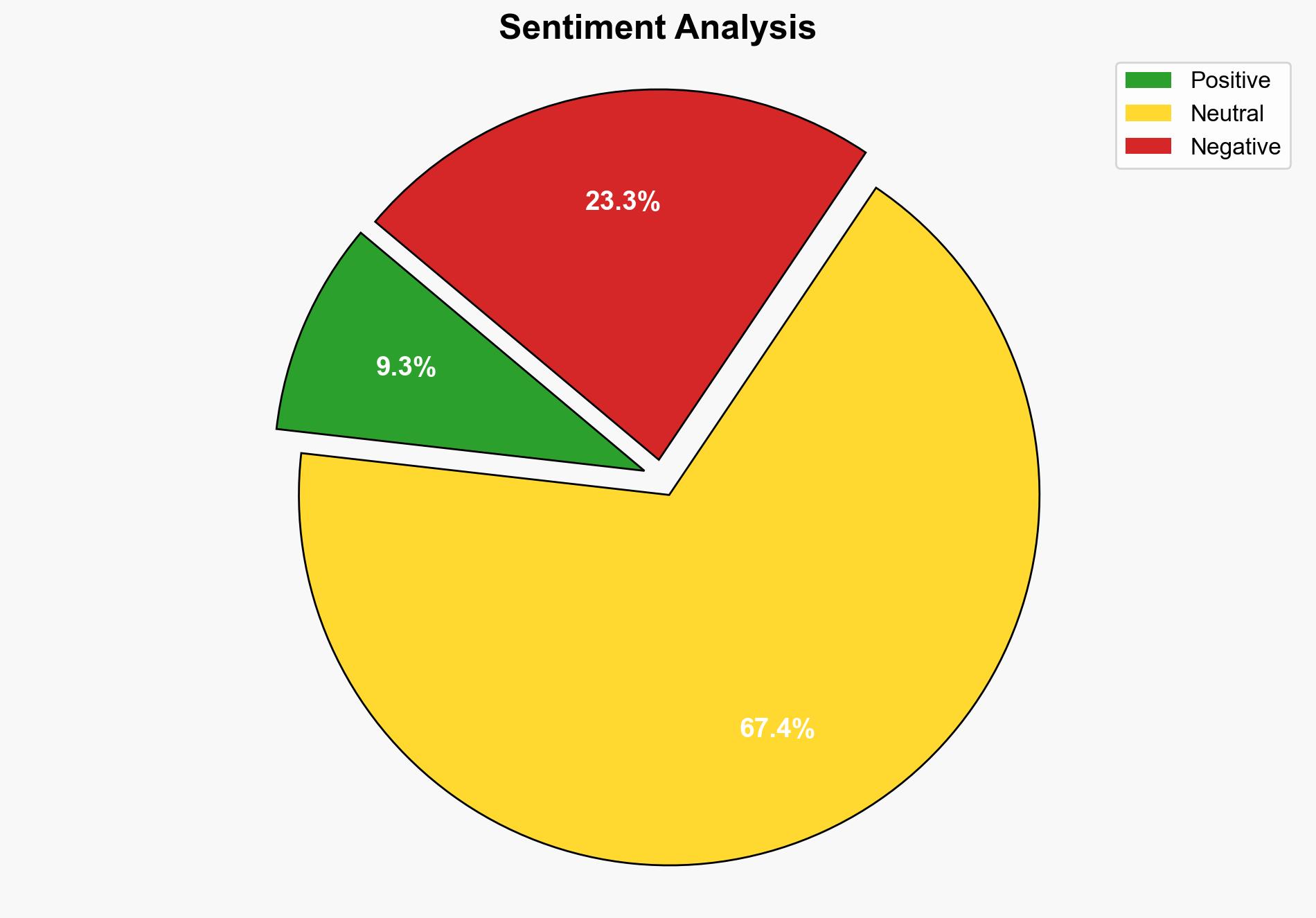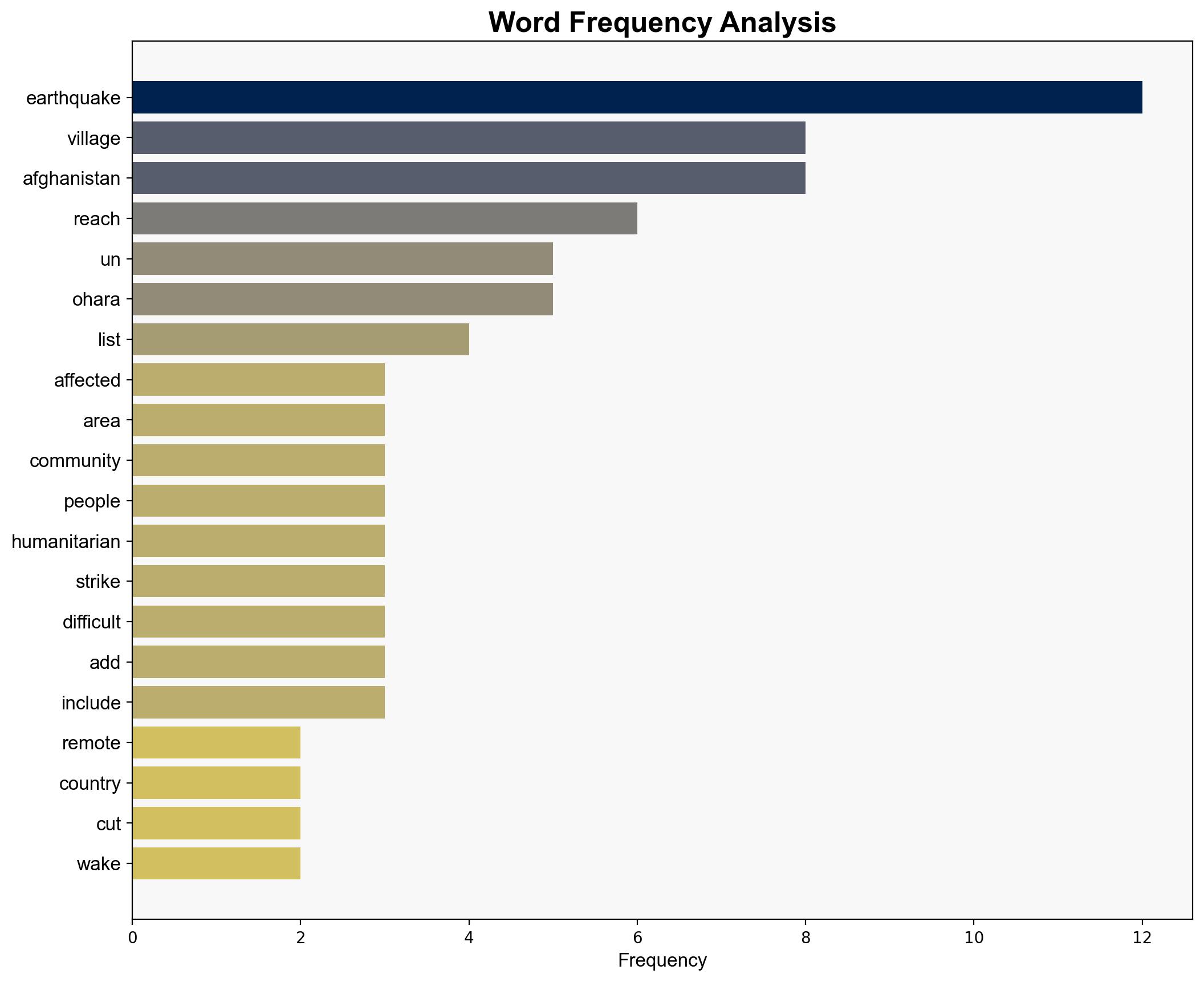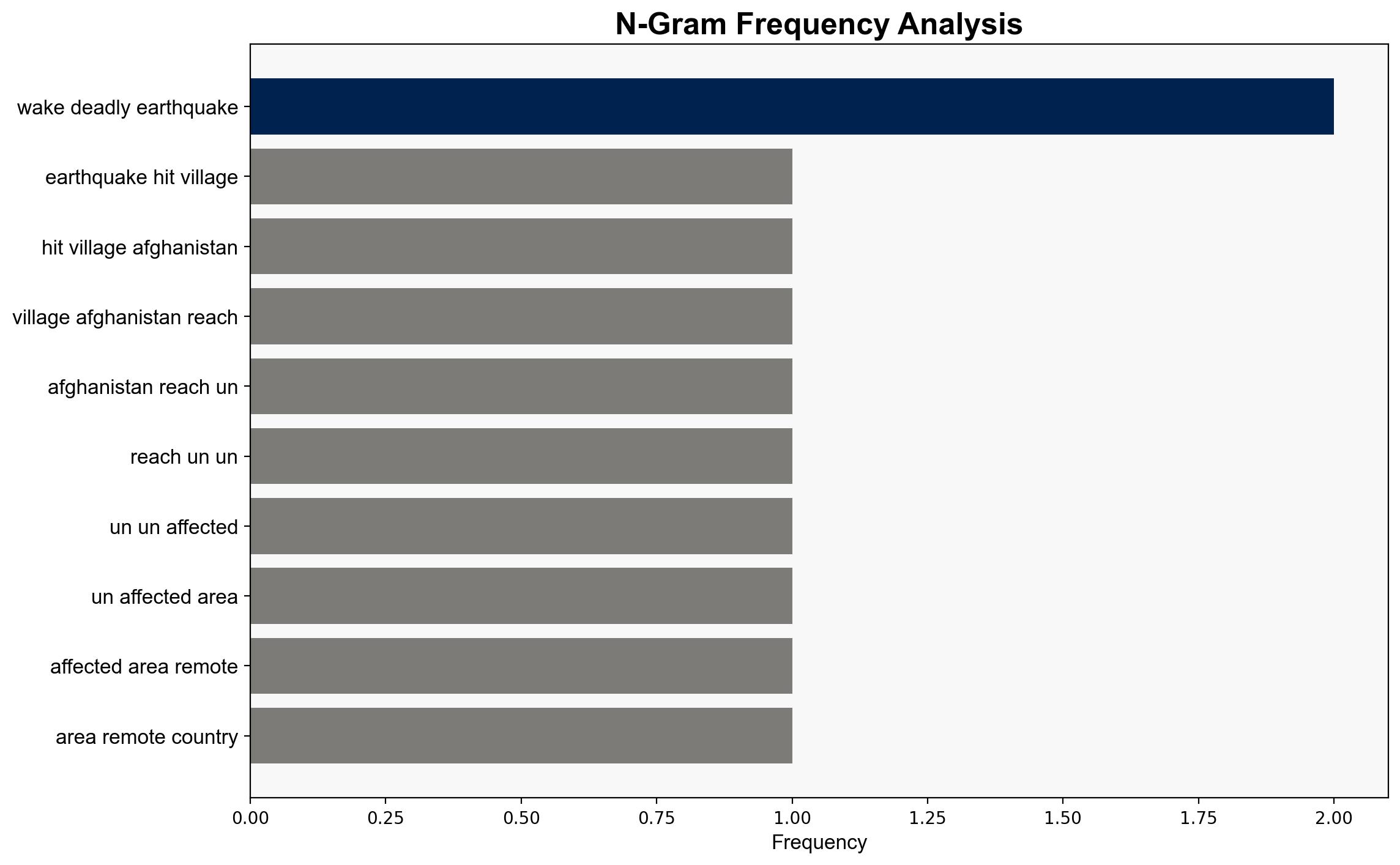Hundreds of earthquake-hit villages in Afghanistan still not reached UN – Al Jazeera English
Published on: 2025-09-09
Intelligence Report: Hundreds of earthquake-hit villages in Afghanistan still not reached UN – Al Jazeera English
1. BLUF (Bottom Line Up Front)
The most supported hypothesis suggests logistical and environmental challenges are the primary reasons for the UN’s inability to reach affected Afghan villages. Given the geographical and infrastructural constraints, humanitarian aid delivery is severely hampered. Confidence level: Moderate. Recommended action: Enhance logistical coordination and explore alternative delivery methods, such as aerial drops, to expedite aid distribution before winter exacerbates access issues.
2. Competing Hypotheses
1. **Logistical and Environmental Challenges Hypothesis**: The primary reason for the UN’s inability to reach affected villages is due to geographical remoteness, poor infrastructure, and adverse weather conditions. This hypothesis is supported by the detailed description of the difficult terrain and the impending winter season.
2. **Political and Security Constraints Hypothesis**: The inability to reach affected villages is primarily due to political and security constraints, including potential restrictions imposed by local authorities or security threats from insurgent groups. This hypothesis considers the complex political landscape in Afghanistan.
3. Key Assumptions and Red Flags
– **Assumptions**: The logistical hypothesis assumes that no significant political barriers are impeding access. The political hypothesis assumes that security threats are significant enough to deter UN operations.
– **Red Flags**: Lack of specific information on any political negotiations or security incidents affecting aid delivery. Potential bias in underestimating the political landscape’s impact on humanitarian efforts.
4. Implications and Strategic Risks
Failure to deliver aid could lead to a humanitarian crisis, increasing mortality rates and potentially destabilizing the region further. This situation could exacerbate existing tensions and lead to increased displacement, affecting regional stability. The onset of winter poses a critical time constraint, increasing the urgency of the situation.
5. Recommendations and Outlook
- Enhance coordination with local authorities to ensure safe passage for aid convoys.
- Explore alternative delivery methods, such as airlifts, to bypass inaccessible roads.
- Scenario Projections:
- Best: Rapid deployment of aid through coordinated efforts mitigates the crisis.
- Worst: Delays lead to a severe humanitarian crisis with high mortality rates.
- Most Likely: Partial success in aid delivery, with some areas remaining inaccessible.
6. Key Individuals and Entities
– Shannon O’Hara: Oversees coordination for the UN’s humanitarian office in Afghanistan.
– UN Humanitarian Teams: Responsible for aid delivery and assessment.
7. Thematic Tags
national security threats, humanitarian aid, regional focus, logistical challenges, disaster response




